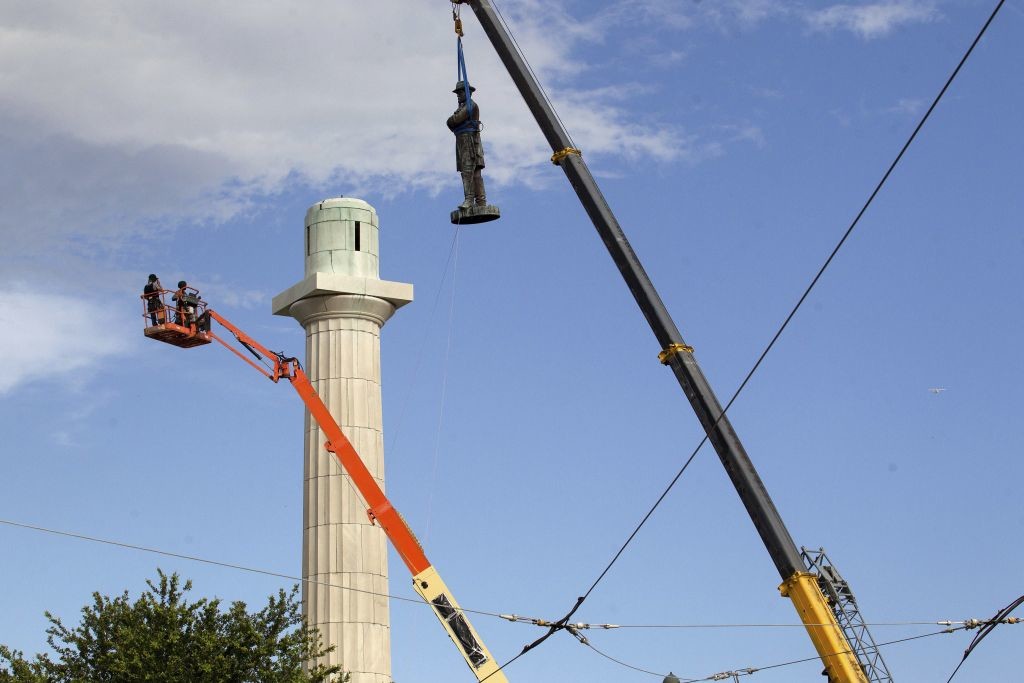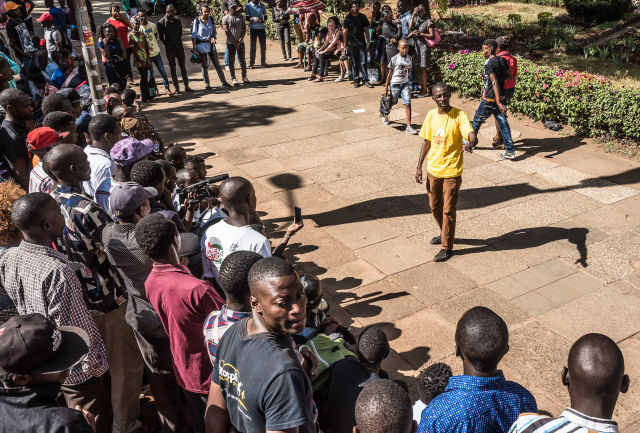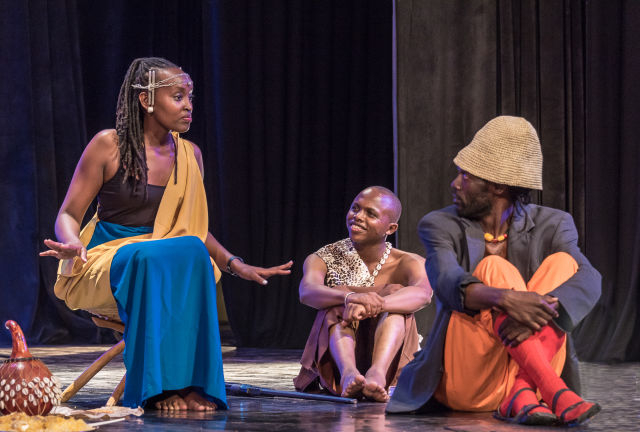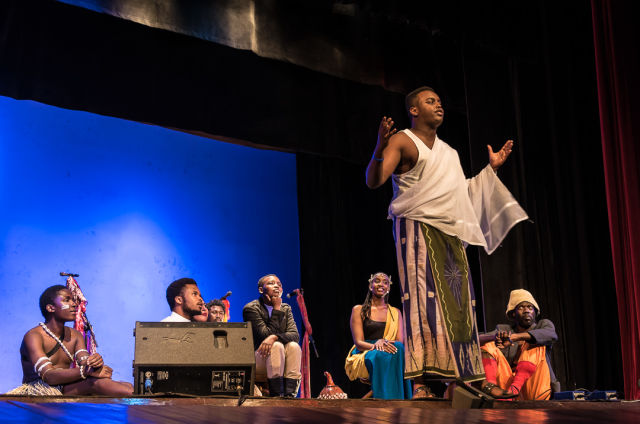ALICE COLTRANE
TURIYASANGITANANDA
____________________
____________________
Kalamu ya Salaam's information blog
ALICE COLTRANE
TURIYASANGITANANDA
____________________
____________________
THE HEALERS
from the CD:
ASHE Cultural Arts Center
Presents
HEALING FORCE
Kalamu ya Salaam & The Congo Square Preservation Society Drum Circle
Today in history, May 19, 1925, Malcolm Little/Malcolm X/El-Hajj Malik El-Shabazz was born (Malcolm Little) in Omaha, Nebraska.
He would’ve been 92 years old today, were his life not cut short at the age of just 39 years old, when he was assassinated in New York City.
Of course, we all know of Spike Lee’s 1992 cinematic masterwork based on the life of the man – a film that currently rests among the nation’s treasures in the world’s largest archive of film, TV and sound recordings; in 2011, it was inducted for preservation in the National Film Registry of the Library of Congress.
It’s available on almost every home video format for those who still haven’t seen it.
But also strongly recommended is Orlando Bagwell’s excellent 2 1/2 hour 1994 documentary “Malcolm X: Make It Plain,” narrated by Alfre Woodard – a film that paints a comprehensive portrait of Malcolm X: hustler, visionary, husband and father; dynamic orator; after spending time in prison, Minister Malcolm, the fiery, eloquent spokesman for the Nation of Islam; and finally as El Hajj Malik El Shabazz, internationally recognized leader and advocate for oppressed peoples – loved and despised, revered and feared… until he was killed on February 21, 1965 at just 39 years old.
The entire documentary, which aired as part of PBS’ award-winning American Experience film series in 1994, can be found online at numerous locations like YouTube, and is encouraged viewing; even if only in remembrance on this day. The full film is embedded below, so watch it now or bookmark this page to watch it later:
NEW ORLEANS
TAKES THEM
DOWN
 Masked city workers in New Orleans have removed the last of four monuments to the pro-slavery rebellion defeated in the US Civil War.
Masked city workers in New Orleans have removed the last of four monuments to the pro-slavery rebellion defeated in the US Civil War.
The 133-year-old statue depicted General Robert E Lee, the top military leader in the Confederacy.
Critics say monuments to the Confederacy are racially offensive, but supporters say they are important symbols of the city’s Southern heritage and held protests during the other removals.
>via: http://www.bbc.com/news/av/world-us-canada-39985414/new-orleans-removes-last-confederate-statue
HANNAH POOL
FREIDA PINTO
IN ‘GUERRILLA’

A scene from a performance organized by Jalada—a pan-African writers’ collective—in Nairobi, Kenya.
(Photo: Jerry Riley/Pacific Standard)
It began with a workshop for young writers in Nairobi in 2013, organized by the Kwani Trust and the British Council. As Moses Kilolo recalls, he had never attended a writing workshop before. Like so many of his peers, he had been toiling alone: Each day he would haunt his university library, struggling in his own writing to imitate the English-language classics that he found on the shelves. It was a remarkably well-stocked library, as he remembers it, the best a young writer could hope for. Yet while he had produced a few halting efforts at prose, he hadn’t yet “come out” as a writer. He stayed in the stacks. It was only after the three-day workshop with a dozen other young writers, he says, that the brilliance of his peers pulled him out of the library—helped him to realize what he could never accomplish alone. “I wasn’t as good as I thought,” he laughs. “They tore my work apart! It was moving to know that there’s so much more possibility.”
The feeling was general among the workshop’s participants. At first they stayed in touch out of a spontaneous desire to keep the conversations going. But after Okwiri Oduor—who would win the Caine Prize for African Writing later in the year—set up a Google group named Jalada, after the word for library in Kiswahili, the group began to evolve into something more concrete. As the members began writing, and editing each other’s work, they also began talking about what hadn’t been written yet, and what needed to be. They began building their own library: A few months after the workshop, they set up a bare-bones website (jalada.org) where they published an anthology of original work loosely themed around the notion of insanity, Sketch of a Bald Woman in the Semi-Nude and Other Stories.
It had been an easy choice to publish on the Internet: It was free, it was easy, and they had complete control. As the word spread—and as the inaugural anthology did the rounds on social media—they began hearing from writers across the continent, asking if they could submit to the next anthology. Jalada’s editors said yes. The second collection—Sext Me: Poems and Stories, on the intersections of sex and technology, and twice as long as the first—included a handful of participants from outside Kenya, as well as Jalada’s first official call for submissions. Exactly a year after the first anthology, Afrofuture(s)—a three-part shelf-buster of Africanist speculative fiction—had close to a majority of non-Kenyan writers.

A scene from a performance organized by Jalada—a pan-African writers’ collective—in Nairobi, Kenya.
(Photo: Jerry Riley/Pacific Standard)
As the library has grown from a roomful of young Nairobians to an ongoing conversation that spans the continent—with email, Skype, and social media allowing members in a half-dozen countries to stay in touch—it’s become clear that Jalada is where the future of African literature is being written. A project with a pan-Africanist scope might have drowned under the logistics of communication and distance, or lost its energy in fundraising. Instead, meetings have yielded true mentorships and editorial relationships, and correspondences have blossomed into long-term collaborations, as the contributors to each anthology have become a part of the broader network. The management team remains mostly Kenyan—allowing semi-regular face-to-face meetings—but the structure is as horizontal and outward-looking as possible. Members from Namibia, Nigeria, Zimbabwe, South Africa, and Somalia make up the core group, with an even broader network of contributors and collaborators. Richard Ali in Nigeria and Edwige-Renée DRO in Côte d’Ivoire have been crucial to the project’s expanding reach, for example, both for their editorial expertise and for connecting Jalada to new writers in West and Francophone Africa. Building connections with North Africa is the next hurdle.
Jalada’s “about” page is brief and to the point: a “pan-Africanist writers’ collective” whose goal is “to publish literature by African authors regularly by making it as easy as possible for any member to publish anything.” This tautology—their goal is to publish the things they are publishing—tells a story of its own: Jalada is just the work itself, without money, pretensions, or ego. The anthologies don’t have introductions, nor are there mission statements or manifestos; there is only the writing.
As with anything new and experimental, the quality of the writing is uneven: Sometimes raw and incandescent, it’s as likely to be interestingly incoherent as heart-stoppingly precise. But the collective is bigger than the sum of its parts, and the project’s ambitions are transformative. By self-publishing online—and by working in a spirit of collective collaboration—Jalada’s themes in its first year of existence form a checklist of the topics that someone like Moses Kilolo might struggle to find on the shelves of a Nairobi library: insanity, sex, technology, and the future. Because a top-heavy pantheon of (mostly male) writers from the 1960s and ’70s has dominated African literary publishing for decades, African literature has often been backward-looking and history-oriented. Jalada made a clean break, even establishing a commitment to gender parity from the beginning. (Original contributor Anne Moraa was blasé when I asked her about this: “If you are open to the best work, you will achieve gender parity by default,” she said, though she also gave credit to the original workshop for being gender balanced.)
In 2015, Jalada began its most ambitious project yet: to go beyond the handful of colonial languages in which most African writers write—English, French, Portuguese, and Arabic—and explore the thousands of mother tongues that the vast majority of the continent’s people speak. With more than 3,000 languages spoken by significant populations, Africa’s everyday polylingualism defies most Western understanding. In Kenya, for example, it’s common to speak one language in the streets, another in school, and another in the family home (Swahili, English, and an ethnic or tribal language like Kamba, Kikuyu, or Luo). But exceptions outweigh even this very rough norm; Nairobi urbanites might speak Sheng more than either Swahili or English (the languages of which it is a patois), while interethnic families tend to speak multiple languages. Anywhere you find immigrant communities (which is everywhere), the linguistic cocktail gets mixed in yet other ways.
The only generalization one can venture is this: If there’s one thing that unites Africa—that nearly all Africans have in common—it’s the same polylingualism that divides it, an irony that has haunted African literature since its beginnings. It has taken a project like Jalada to do something about it.
Before colonization and the imposition of European languages, the continent’s poetics were oral, dispersed across Ewe, Shona, Kiswahili, Luganda, Igbo, and thousands of other languages. When African literature began to be written, published, and read in the early part of the 20th century, it was in the context of imperialist globalization, a Pan-Africanism that was invariably expressed in the languages of the colonizers. Indeed, English, French, Portuguese, and Arabic provided the literary infrastructure that brought writers and readers across Africa into contact with each other, sometimes for the first time in history: Nigerians could read Kenyans in English, Ivorians could read Mauritanians in French, and novels by Tayeb Salih of Sudan (in Arabic) or Pepetela of Angola (Portuguese) could crisscross the continent in translation. But that was where it usually stopped; translations from African languages were rare (and mostly ethnographic), while translations between African languages were almost non-existent.
For most African writers, then and now, the languages of the former colonizers have been the only pragmatic choice. Faced with a nation speaking over 300 languages, for example, Chinua Achebe wrote in English, the only language most Nigerians shared. Rare exceptions prove the rule: When Ngugi wa Thiong’o vowed to write only in his native Gikuyu, in the 1970s, his polemic made waves but few converts. His manifesto, Decolonizing the Mind, has been debated and fought over for decades and remains a lightning rod for controversy in African literary circles. But the cruel irony is that most still read him in English. Without a strong Gikuyu publishing industry—in a country where Gikuyu speakers make up around 20 percent of the population—even Ngugi’s main Kenyan audience will always read him in English translation.
In 2015, Jalada published an anthology of original stories and poems both in the authors’ own respective languages (many of which were African) and in a variety of translations. Kilolo’s “An Empty Wall,” for example, is presented both in English and in Junior Moyo’s Ndebele translation (a language spoken in Zimbabwe). Edwige-Renée DRO wrote “Pneu Secours” in French and translated it into English herself, while Mazhun Idris made the translation into Hausa (spoken in northern Nigeria). But this was just a prelude to the group’s most striking translation project: In the next anthology, they took a story donated by Ngugi wa Thiong’o (“Ituika Ria Murungaru” in Kikuyu, “The Upright Revolution” in English) and translated it into 62 languages (and counting).

A scene from a performance organized by Jalada—a pan-African writers’ collective—in Nairobi, Kenya.
(Photo: Jerry Riley/Pacific Standard)
While the accomplishment is remarkable, of course, the anthology can’t really be read in the conventional manner at all: Few can read Ngugi’s folkloric parable about why humans walk upright in more than a handful of the languages that the anthology offers. Rather, the point is to imagine a different kind of library. “At a personal level, what Jalada has done is akin to recapturing stolen lands,” as founding editor Richard Oduor Oduku told me. “We have recaptured the authority to imagine our own futures, including what languages we will, or we can, employ.” This sentiment was general among the translators I spoke with; Rwandan Louise Umutoni, for example, described translation into European languages as a kind of brain drain, and explained that, instead of Africa’s literary resources enriching languages like English, Jalada reversed the flow, translating European works into African languages starved for the written literary word.
In November, Jalada staged a reading of the story in Nairobi, in seven languages: Sheng, Kiswahili, Dholuo, Kikuyu, Kiluhya, Kinyarwanda, and English. Few in the audience would have been fluent in more than a few of them. But, as Kilolo recalled, the revelation was seeing seven different languages in the same place, before the same audience, uniting rather than dividing. “People were thrilled to see so many languages at once,” he said. “We have to do away with the notion that speaking a different language divides people.”
>via: https://psmag.com/magazine/the-revolution-uniting-african-literature
Erotica is a real thing, sexual sensual writing that makes you squirm in your seat; scenes that turn a cold lonely night into something steamy; maybe something to keep you company and give you that secret smile whilst waiting for a friend in a restaurant.
Mostly we want things that will turn people on. A lot. No pressure. A little something like this, or this.
We know writing a sex scene is hard so here is an article with some tips.
This is a call for submission to Dark Juices and Aphrodisiacs: An Erotic Anthology.
The anthology will be available online to download. There will also be hard copies available. And if your piece is selected to be part of the anthology you shall be paid $100 for your service to sexiness.
To submit email: darkjuicesanthology@gmail.com
Dark Juices & Afrodisiacs – An Anthology of African queer erotica
“I had a feeling that Pandora’s box contained the mysteries of woman’s sensuality… The language of sex had yet to be invented. The language of the senses was yet to be explored.”
Ever had a sexual fantasy? Ever had something make you so hot under the collar you just had to write about it? Something that had you dripping wet? We want stories about sex, pleasure and coming. We want stories about desire. We want stories about when sex happened and sex did not happen. We want stories of African women experiencing pleasure with other women.
We recognise that sexuality is a complex and wide space, it is not possible to present all forms of representation in one place. For this edition, as women who have sex with women, we recognise that there are not many erotica stories written by women for women on the African continent. We hoped to use this as an opportunity to invite women to write their fantasies, their experiences, they wildest dreams. This is about sexual freedom and imagination and expression.
We are creating an anthology we seek to call Dark Juices & Afrodisiacs for African queer women to contribute erotica.
Contributors will receive an honorarium of $100 for submissions that appear in this anthology, as well as a copy of the awesomely sensually sexy final product.
GUIDELINES FOR ENTRIES
The stories should be:
Please send the submissions double spaced in Times New Roman, 12 point black font in a word document (.doc. rtf or .docx, NO PDFS).
Email submissions to: darkjuicesanthology@gmail.com
Ends on August 15, 2017
Guest editors include: John W. Bateman, M.A. in English and Innovative Writing, (University at Buffalo) and Emily de Beer, PhD in Creative Writing (University of Louisiana at Lafayette).
We seek papers of any length in manuscript format (double-spaced in Times New Roman font).
We additionally seek images or artwork related to the “[Inter·medi(a)_te]” theme for the second issue. Please review our note on image submissions at the bottom of the call section of our website. There is no fee for submission.
The submission period is May 15th – August 15th, 2017. Announcement is by December 1st.
Art Competition
TRANSFORMATION:
BEAUTY
“The sun is new each day.” – Heraclitus
The meaning of visual beauty has been different in different cultures and geography. It is also based on human experience and history; and it is still transforming. You are invited to show this transformation of beauty: are there elements of Beauty that are universal and eternal for us as humans? Or is the concept of Beauty a subjective concept?
Beauty has been a big factor in visual arts, historically. The transformation of how to perceive and value Beauty has affected what we see as contemporary art all around the world. The factors influencing the notion and comprehension of Beauty are:
Aesthetic and Classical Beauty
Fashion Beauty
Pop Culture Beauty
Beauty in different cultures currently and historically
Conceptual Beauty versus Visual Beauty
Award
Selected artists (from each category) will be invited to participate in the visual art exhibition “Transformation” to take place in Winter 2017-2018, Gallery MC, New York. The project features selected artworks in three categories: Social Transformation, Personal Transformation, Beauty Transformation. The finalists will have an opportunity to give an artist talk, be interviewed and/or featured on the RE:ARTISTE’s website and social media networks.
The Jury
The art competition is evaluated by Kay Kane, Sheryl Haler, and T.Lawrence Wheatman. Please find out more about the jurors on our Jury page.
Submissions
The competition is open to everyone, 18 years and older, professional and amateur artists alike.
Entries* must be in JPEG format, no larger than 1400 x 1800 pixels, and under 2MB.
The following media are accepted:
Photography (including documentary)
Painting
Illustration
Drawing
Installation
Digital Art
3D-Art including Ceramic Works
Deadline for submissions: May 31, 2017
The winners will be announced on the RE:ARTISTE website on 08/30/2017. The winner and the finalists will be personally notified via email.
Entry Fee: the entry fee is $35 for the first five images and $10 for every additional image.
*The submitting artist owns the copyright to his/her competition entry as its author. By submitting an entry to the art competition “Transformation: Beauty” the artist gives RE:ARTISTE permission for the entry to be used on the RE:ARTISTE website and its social media channels. The artist gives RE:ARTISTE the right to use his/her name and city of residence for the sole purpose of identifying the artist as the author of the entry. The entry fee is not refundable.